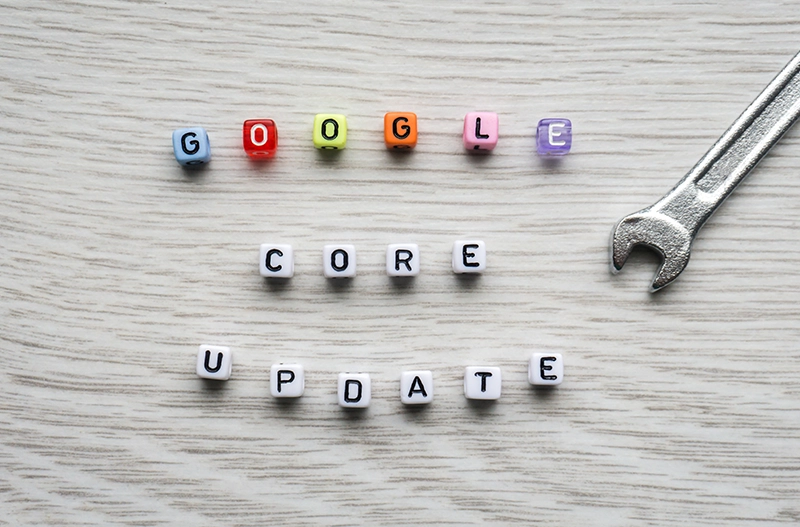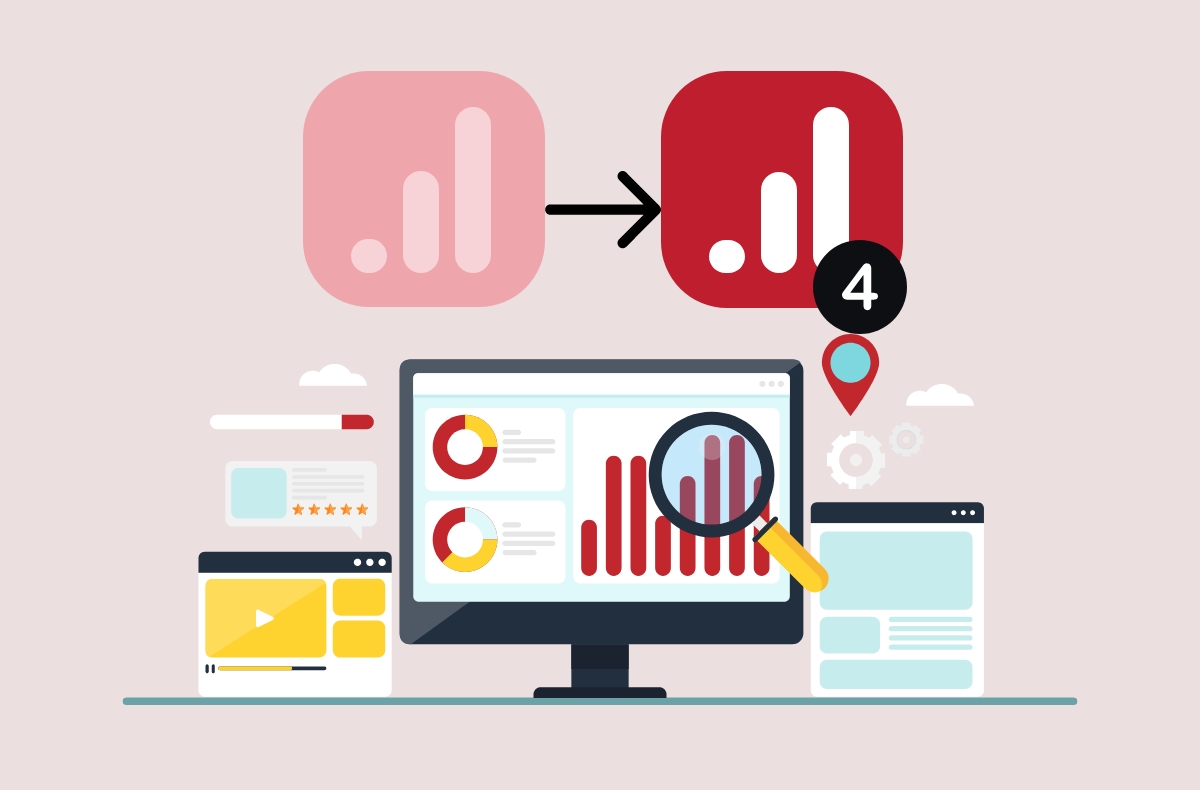Grofuse News
Get the latest insights from our specialists, read our client success stories and discover funding opportunities for your digital growth.
How Content Creation Drives Growth in the Agricultural Sector?
Content creation is a vital tool for driving growth [...]
Grow Digital Voucher
Grow Digital Voucher Last updated: Oct 15, 2024 A new [...]
Last Chance to Apply for the €2,500 Trading Online Voucher Scheme Before 31 October
The Trading Online Voucher Scheme is closing for applications at [...]
How to Implement Digital Marketing in Agriculture
1. Introduction to Digital Marketing in Agriculture Digital [...]
Best Digital Marketing Strategies for Agriculture
Digital marketing strategies are crucial for enhancing brand awareness [...]
How to Hone Your Company Messaging to Win More Clients
You know your business inside and out, or you think [...]
Aligning Your Team with Your Company Vision: Why Is Team Alignment Important?
A company's success is closely tied to its team's unity, [...]
Grofuse Newsletter April 2024
Download A Free Copy Now 
Over 70% of Farmers Prefer Online Business Transactions
More and more farmers are turning to the internet [...]
Google’s March 2024 Core Update: 5 Essential Insights
Updated 14th April 2025: Ongoing volatility reported into early April [...]
Understanding Google’s New Consent Mode V2 and Its Implications for Your Business
With privacy regulations taking centre stage, businesses face increasing pressure [...]
The 7 Cs of Social Media Strategy for Business Owners
Business advertising on social media is an indispensable tool for businesses seeking to expand their reach and engage with their audience on a deeper level. This is where understanding the 7 Cs of social media strategy comes into play. This framework provides a comprehensive approach to effectively harnessing the power of social media for business growth.
Making the Switch from Universal Analytics to Google Analytics 4
To better understand the complex, multi-platform journeys of today's customers, [...]
Google Core Updates May 2022
More than six months since the last core update, Google is now rolling out a new broad core update. It is called the May 2022 core update - Google’s first broad core algorithm update of 2022. The most recent core update was the November 2021 core update, more than six months ago. In an announcement, Google stated: “Today, we’re releasing our May 2022 core update. It will take about one to two weeks to fully roll out.”
Google Analytics 4 What Is It And What’s New?
Google Analytics 4 is a new take on tracking recently released by Google. Grofuse explains how GA4 is different from Universal Analytics and what's new.
How to Improve Your ROI with Google Ads
Are your Google Ads campaigns falling short of their revenue [...]
The Importance of SEO for Business
Content is the latest trend in the world of digital [...]
The Art of Creating Engaging Video Content for Social Media
Are you a social media enthusiast looking to create engaging [...]
Why Are UX Design Services Essential For Business?
Creating a great user experience (UX) design is essential [...]
Why Social Media Campaigns Are Essential for Businesses
The internet connects the world, and millions of people use [...]
Why Having a Digital Presence Is Essential for Businesses
Can you make a decision without looking at reviews and [...]
Threads: App Hits Monumental 100 Million User Count in Just One Week
Social media giant Meta has once again revolutionised the digital [...]
How Can PPC Advertising Help Your Business Stay Relevant in a Recession?
PPC is a sales-focused approach that delivers results and generates sales, all while being cost-effective. You only pay when someone clicks on your ad, which means you're investing your budget in potential customers who are actively interested in what you have to offer. By embracing PPC advertising, you're not just cutting costs, you're strategically investing in activities that increase conversions and drive revenue. It's a smart move that keeps your business relevant even in the toughest of times.
How to Adapt Google’s Helpful Content Update to Your Strategies
Google has taken a stand for quality over quantity with its awesome "Helpful Content" update. Let's dig in and find out what it's all about!
Meta Shops Feature Changes: What Businesses and Users Need to Know
Facebook and Instagram are doubling down on their commitment to [...]
Meta Verified – The Solution Is On The Way
Social media platforms and apps have become an integral part [...]
Making the Switch from Universal Analytics to Google Analytics 4
To better understand the complex, multi-platform journeys of today's customers, [...]
Bounce rate is a digital marketing term used in website traffic analysis. This is defined as when a website user immediately leaves a webpage without taking any action. This can negatively affect your rankings, as it may suggest to search engines that your content is not of high-quality.
This terminology is used in Pay Per Click (PPC) advertising. ‘Negative keywords’ prevent advertisements from displaying certain keyword phrases. By preventing your ad from showing on irrelevant searches, money is saved on wasted clicks and opportunities are improved for increased conversions.
Google Analytics provides the information needed to help you improve your business strategy, discovering behavioural patterns you probably never knew about visitors on your site. Whether you have an e-commerce site or an informative site, you want to understand the behaviour of your visitors to deliver better results.
Backlinks are important because they signal to Google that another resource finds your content valuable enough to link to it within their own content. As a website gains more backlinks, search engines such as Google recognise that the website possesses valuable content worth ranking well on the search engine results page.
Whether your business is taking advantage of it or not, social media has forever changed how consumers communicate with companies and vice versa. Being accessible to your customers – and potential clients – via social media is vital for developing relationships with them and helping them through the sales funnel or creating brand awareness.
It’s important to remember that content marketing is just one step in the conversion funnel.
Through a combination of SEO, content marketing, social media marketing, outreach, email marketing, and website design, prospective customers are led to converting.
Content marketing is vital in the conversion process since each page of your website and each informative blog post plays a role in convincing visitors to buy. Create different content with each step of the conversion funnel in mind and don’t forget to include a call to action.
Conversion optimisation is the process of increasing the number of website visitors that convert into active customers. By improving your website’s user experience, users are more likely to complete the desired action on your webpage, whether purchasing a product or signing up for your newsletter.
The best way to improve user experience is by removing unnecessary content that may slow your site down includes providing live support and adding testimonials.
Yes, both are essential for your Google rankings. User interface is the technical side of SEO, while the way the user navigates through the site (UX) influences essential metrics, such as bounce rate, time on page, and click-through rates. Google takes all of these factors into consideration when ranking pages.
The Core Web Vitals strongly impact the way that users interact with your website. Google is becoming increasingly focused on user experience, which means websites need to do the same. Core Web Vitals identify user experience issues by generating a metric for three key areas of user experience, including:
- Page loading performance
- Ease of interaction
- Visual stability of a page from a user’s perspective
Additional metrics Google analyses are whether your website is mobile-friendly and provides safe browsing and non-intrusive content such as pop-ups and ads.
Keywords are the words and phrases that searchers type – usually on a search engine. These are the words that we use when looking for pages, images, videos, blogs or any kind of information on the web. These keywords need to be strategically inserted into your pages and content to increase your visibility on the search engines results page.
Google Tag Manager (GTM) is a tool which provides a user-friendly interface to implement tags and pixels on your website, such as Facebook pixels or AdWords conversion tracking. By using GTM you can implement a wide variety of coding scripts, tags and code snippets that you would otherwise need to install on your website. GTM makes implementing and changing tags easier since they are all stored in one place.
With GTM, you can track a number of actions on your website, such as clicks on the menu, clicks on call-to-action (CTA) buttons or form completions. You can see similar data with Google Analytics, but it is not as detailed as the data from GTM.
There are many contributing factors as to why you may not be able to see your ads on Google. These include:
1. Geotargeting
Your ads might not show because you are searching from outside the geographic area your ad is targeting.
2. Your bid is too low
PPC campaigns are a search auction – you are likely competing for ad space with a number of other companies for the same keywords with a bidding budget that is too low.
3. Ad scheduling
When setting up your PPC campaigns, you have the option to define and set your ad scheduling. Your scheduled ad may not be running yet or it may already be complete but the end date that you set.
4. Budget constraints
With PPC campaigns, you are charged a cost per click (CPC). Each time someone clicks on your ad, this will be deducted from your daily budget – you may have already received enough clicks and spent your budget.
5. Platform bidding
On Google, you have the option to advertise to users on particular platforms they are using such as desktop, mobiles or tablets. You may have set up the campaign to target just desktop or just mobile searchers and have excluded the other variations.
6. Disapproved ads
Google has a number of advertising policies that you must adhere to. If your ads do not satisfy these requirements, your ads will be disapproved.
7. Negative keywords
In Adword campaigns, you can use negative keywords to ensure that your ads don’t show for keywords you know you don’t want to show ads for. Negative keywords tell Google not to show your ads whenever someone searches with a particular word.
8. Billing
Make sure to set alerts or check the billing/payments section if your ads are not showing. Sometimes there can be issues with your credit card or payment method, prompting Google to stop your ads from running.
9. Your campaigns just started
If you just pushed your campaigns live and you are not seeing your ads, you may just have to wait – it takes some time for Google to approve ads, keywords and other variables within your campaigns.







































